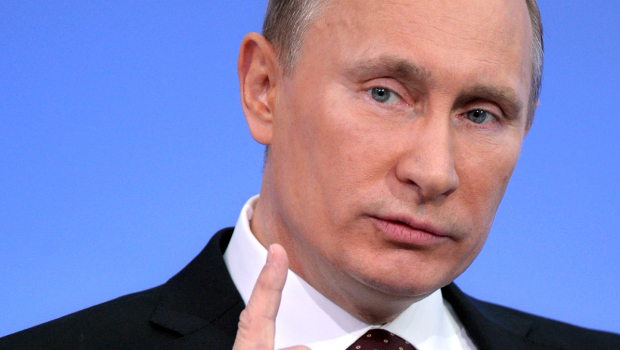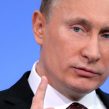
As Putin Reshuffles His Cronies, the Checkered Opposition Squabbles
Publication: Eurasia Daily Monitor Volume: 8 Issue: 228
By:

The December 10 demonstration, gathered on Bolotnaya Square in downtown Moscow to protest massive election fraud during the December 4 Duma elections, was massive: the official count by state police was 25,000, while organizers claimed some 150,000. Independent calculations were of 60,000 to 70,000 protesters at the peak of the event. Bolotnaya Square is on an island on the Moscow River just opposite the Kremlin. The protest there lasted four hours under a veil of increasingly heavy snow. The riot OMON police, reinforced by soldiers of the Separate Motorized Special Forces Division (formerly the Dzerzhinsky Division named after the founder of the CheKa-KGB), did their best to avoid any clashes with the protesters. Rallies, although of a lesser scale, were also staged in nearly 80 cities across the country (Itar-Tass, December 12).
A protest rally in Moscow on December 5 had gathered some 10,000 protesters and was ruthlessly assaulted by riot police. By December 8, some 1,200 were arrested during three days of continued protests in Moscow. Dozens of journalists and protesters were beaten up, and leading critics of the regime received prison sentences. Anti-corruption campaigner and top blogger, Alexei Navalny, who has branded the ruling United Russia (UR) the “party of crooks and thieves,” is currently serving a 15 day sentence. Protests in St. Petersburg have also turned violent with hundreds of arrests (EDM, December 8). The assault instigated a mass grassroots mobilization of citizens through social internet networks that resulted in the Bolotnaya Square rally. Apparently the authorities feared more police brutality could snowball the street protest further to 500,000 or more and decided to show some restraint.
Moscow today has an official resident population of some 12 million, but there are millions more who are migrants from other Russian provinces and from independent republics of the former USSR, living unofficially or on temporary permits in town and in the outlying suburbs, commuting to work in Moscow. Estimates by city hall put the workday population of Moscow at some 20 million. The mass pro-democracy protest movement of 1990 and 1991 that terminated the Soviet Union did generate street protests in Moscow up to 1 million people strong, when the overall population was about two times smaller than today.
Moscow has only some 2,000 specialized riot police. The conscripts of the “Dzerzhinsky” division are composed of skinny 18-year-olds with less than a year of service under their belt, who are not in very good physical condition to assault thousands of enraged protesters with batons. There are some 50,000 other policemen serving in Moscow, but these are traffic and precinct cops – corrupt officers with low morals and dubious training in effectively suppressing serious mass riots. The widespread nature of the current protests across Russia could prevent the massive concentration of riot police from the provinces in Moscow. Last week there were rumors that a “Chechen police regiment” was airlifted to Moscow. Chechen warlord leader Ramzan Kadyrov adamantly denied any troops were being moved (https://www.rusnovosti.ru/news/176262/, December 8).
For 12 years, Vladimir Putin has been an absolutely “Teflon dictator,” but a week of post-election protests seems to have shattered that notion. Putin’s strength has been clever propaganda, intimidation and mass corruption, but the regime lacks serious brute force capabilities or a mass force of well prepared, well paid and ideologically-motivated thugs – unlike, say, the present Iranian regime. Outside the relatively small number of specialized riot police, the rest of the military and security forces are wanting in quality or motivation. There are teargas grenade launchers in reserve and special police armored vehicles equipped with water-canons that could be highly effective during the Russian winter. But winter ends eventually even in Russia, while aggressive police tactics multiply the level of resistance.
At present, the authorities seem to hope the protests will eventually fizzle as Russian winter gets severe. On Bolotnaya Square, the masses were overwhelmed by the elation of suddenly discovered unity: mostly middle class men and women of 20 to 40 years who do not remember the great street protest movement of 1990-1991 and did not take part in the small anti-Putin street protests since 2000. The public was mostly liberal, but there was left-wing presence including deputies from the official Duma opposition: Just Russia (JR) and Communists (KPRF). A column of hard-line nationalists joined to stand alongside their bitter ideological opponents (Itar-Tass, December 12). This unity was short-lived.
After a meeting this week with president Dmitry Medvedev, the parliamentary opposition leaders of KPRF, Gennady Zuganov, and the Liberal Democratic Party (LDPR), flamboyant populist Vladimir Zhirinovsky, while continuing to criticize the authorities for mass election irregularities, at the same time denounced the Bolotnaya Square rally as “organized by US special services” and a manifestation of the “orange pelage” that must be resisted (Kommersant, December 14). [The “orange pelage” is a reference to the prodemocracy movement in Ukraine after the rigged 2004 presidential election.] In return for loyalty, the official opposition was offered control of 14 of the 29 Duma committees (www.rbcdaily.ru/2011/12/14/).
The leaders of KPRF, LDPR and JR jointly fiercely denounced a resolution by the European parliament in Strasburg demanding the Russian authorities register the opposition parties that were not allowed to participate in the Duma vote and hold new free and fair elections (Interfax, December 14). The official opposition has in effect denounced the main demands of the Bolotnaya Square protesters – new and free elections. Those middle-class professionals that pay taxes and in effect run the entire Russian economy – its financial and logistical networks – know they have no representation whatsoever within parliament or government.
After playing the “US conspiracy” card together with bribery to secure the cooperation of the Duma “opposition,” Putin began a reshuffling of his cronies to imitate “change.” The Duma speaker, Boris Gryzlov, will be replaced and other massive reshuffles within government and the Kremlin are imminent as Putin prepares change from prime minister to president. On December 15, Putin will be answering censored questions in a simulation of a national phone-in – promising goodies to all Russians in exchange for support. On December 17 and 18, the liberal Yabloko party and the KPRF will be organizing separate rallies to protest election fraud that the Kremlin may hope will take the steam out of the main Bolotnaya Square protest movement. Another major protest rally is being organized for December 24. Some 24,000 individual pledges to participate have been made through social networks in one day alone.




